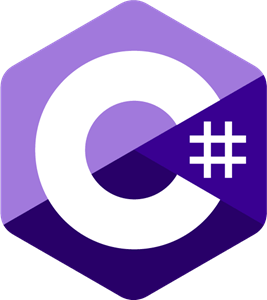Rock Paper Scissors is deceptively simple. Players choose three separate ways of conquering their opponent in a highly technical duel of the minds. A player forms their hands into iconic tools of destruction in an attempt to best their opponents in the quest for glory. Rock beats scissors, scissors beat paper, paper beats rock, and the cycle continues.
A console-based C# implementation of "Rock - Paper - Scissors" Game
The game is a simple Two Player Game, where you and your oponent (the computer) simultaneously choose one of the following three options: "Rock", "Paper" or "Scissors". The rules are as follows:
- Rock beats Scissors (the Scissors get broken by the Rock)
- Scissors beats Paper (the Paper get cut by the Scissors)
- Paper beats Rock (the Paper covers the Rock)
The Winner is the player whose choice beats the choice of his oponent. If both players choose the same option (e.g. "Paper"), the game outcome is "Draw".
The Player enters one of the following options:
- rock or r
- paper or p
- scissors or s
The Computer chooses a random option, then reveals the Winner.
After every Round: Display current statistics and Prompt player to play again.
Using Visual Studio with .NET Core 3.1
-
variables (int; string): Variables are used to store and manage data in your program. In this game, we use variables like
playerWins,computerWins, andplayerMoveto keep track of game statistics and user input. -
const string: Constants are values that don't change throughout the program. We define constants like
Rock,Paper, andScissorsto represent the player's and computer's choices. -
loops (while; do while): Loops allow us to repeat a block of code multiple times. The
whileloop is used to keep the game running until the player decides to quit. Thedo whileloop ensures valid player input before proceeding. -
conditional statements (if/else if/else; switch case;): Conditional statements help us make decisions based on conditions. We use them to determine the winner of each round. For example, the
if/else if/elsestatement compares player and computer choices to determine the winner, while theswitch casestatement generates the computer's move based on a random number. -
comparison operators: Comparison operators are used to compare values. In our game, we use them to check whether the player's choice beats the computer's choice. For instance,
(playerMove == Rock && computerMove == Scissors)checks if the player chose Rock and the computer chose Scissors. -
control flow statements (continue; break;): Control flow statements manage the flow of execution in your program. We use
continueto skip invalid inputs and allow the player to try again, andbreakto exit the game loop when the player chooses to quit. -
classes (Program; Random): Classes are used to define objects and their behavior. The
Programclass contains the game's main logic, while theRandomclass helps generate random computer moves. -
methods (Main): Methods are blocks of code that can be called to perform specific tasks. The
Mainmethod is the entry point of our program and contains the main game loop. -
enumeration value (ConsoleColor): Enumerations are user-defined types that consist of a set of named values. We use the
ConsoleColorenumeration to change text colors in the console. For example,Console.ForegroundColor = ConsoleColor.Cyanchanges the text color to cyan.
These programming concepts work together to create the functionality of the Rock-Paper-Scissors game. They enable the game to handle player input, generate random computer moves, determine winners, and display results.
⚡Source Code Link
You can play the game directly in your Web Browser here:




